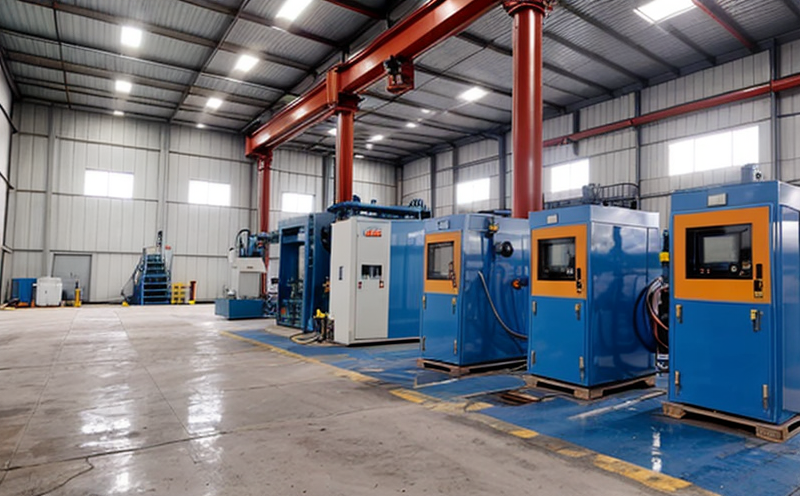DIN 51729 Sulfur Determination in Mineral Samples Testing
The DIN 51729 method is a standardized procedure designed to determine sulfur content in mineral samples. This test is crucial for quality control, ensuring that the minerals meet the required standards set by industry regulations and customers.
Minerals with high sulfur content can lead to various issues such as corrosion, reduced performance, and increased maintenance costs. By accurately determining the sulfur content using DIN 51729, mining companies and material suppliers can ensure their products are safe for use in diverse applications ranging from construction materials to chemical industries.
The method primarily involves the combustion of a sample in an oxygen stream at temperatures exceeding 800°C. The sulfur present in the sample is oxidized into sulfur dioxide (SO2). The SO2 is then absorbed by a solution, which allows for its quantification using titration or gravimetric methods.
The DIN 51729 method provides precise and reproducible results when properly executed. It is essential to follow the standard's procedures closely, including the correct preparation of the sample, the combustion conditions, and the absorption step. Even minor deviations can lead to inaccurate results, which could have significant consequences for both the manufacturer and end-users.
For accurate sulfur determination using DIN 51729, it is recommended that samples are thoroughly dried before combusting them in a muffle furnace or an induction furnace. The sample preparation should be consistent with the test's requirements to ensure reliable results.
The combustion process must occur under controlled conditions to prevent loss of volatile sulfur compounds and minimize errors due to external factors like air flow or temperature fluctuations. Once combusted, the SO2 is absorbed into a solution containing potassium iodide (KI) and sodium thiosulfate (Na2S2O3). The amount of titrant used during this process directly correlates with the sulfur content in the sample.
The results obtained from DIN 51729 testing are typically reported as weight percent of sulfur. Understanding these values is critical for manufacturers, who can then adjust their production processes accordingly to ensure compliance with industry standards and customer expectations.
By adhering to DIN 51729, mining companies not only enhance the quality of their products but also contribute positively towards environmental sustainability by minimizing waste and ensuring efficient use of resources. This method plays a vital role in maintaining high standards within the industrial minerals sector, thereby fostering trust among customers.
The accuracy and reliability of DIN 51729 testing are paramount for industries reliant on quality-assured raw materials. It helps maintain consistent product performance across different batches while ensuring that environmental impacts are minimized throughout the lifecycle of a material's usage.
Industry Applications
DIN 51729 sulfur determination in mineral samples finds extensive application within various sectors, particularly those dealing with industrial minerals. These include cement production, construction materials manufacturing, and chemical industries where sulfur content can significantly impact product quality.
In the cement industry, accurate sulfur content measurement is essential for optimizing raw material blends and ensuring compliance with environmental regulations. High levels of sulfur in Portland cement can lead to increased heat during hydration, affecting both energy consumption and final product performance. By precisely determining the sulfur content using DIN 51729, manufacturers can tailor their processes to produce more efficient and environmentally friendly products.
The construction sector also benefits greatly from this testing method when sourcing aggregates or other mineral-based materials for infrastructure development projects. Ensuring that these raw materials meet specified limits helps maintain structural integrity and longevity of buildings and roads.
For chemical manufacturers, controlling sulfur levels in their feedstocks is crucial for producing stable products with consistent properties. Excessive sulfur can catalyze reactions adversely affecting yield or cause unwanted by-products formation during manufacturing processes.
Quality and Reliability Assurance
Quality assurance through DIN 51729 testing ensures that minerals used across various industries meet strict quality standards set forth by international organizations like ISO, ASTM, EN, IEC, etc. Compliance with these standards not only enhances brand reputation but also builds customer confidence in the reliability of the products.
The precision and repeatability offered by DIN 51729 are key factors contributing to reliable test results. This consistency allows manufacturers to maintain uniform product quality across all batches produced under similar conditions. Repeatability is especially important given that sulfur content can vary widely depending on the source of raw materials, making it necessary for labs conducting such tests to adhere strictly to standard procedures.
Adherence to DIN 51729 also promotes better resource management within mining operations by helping identify sub-standard materials early in the supply chain. This proactive approach prevents costly rejections downstream and reduces overall waste generation associated with non-conforming products.
Environmental and Sustainability Contributions
The determination of sulfur content via DIN 51729 plays a crucial role in promoting sustainable practices within the mining industry. By ensuring that minerals comply with stringent environmental regulations, this testing method helps reduce emissions during processing stages and minimizes potential risks associated with improper disposal.
Minimizing waste generation is another significant advantage offered by accurate sulfur determination using DIN 51729. It allows companies to optimize their production processes, thereby reducing raw material consumption and energy usage. Additionally, preventing the release of harmful gases into the environment helps preserve natural resources for future generations.





